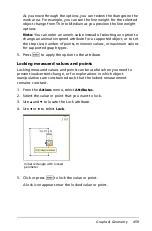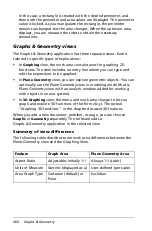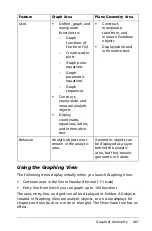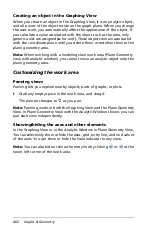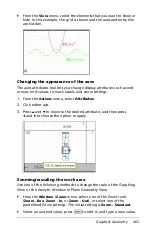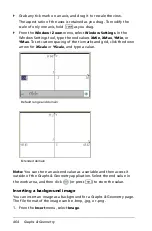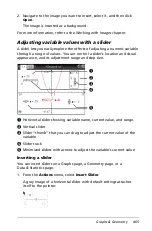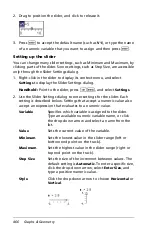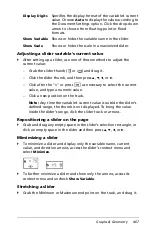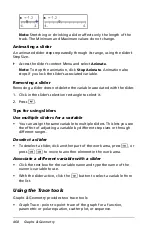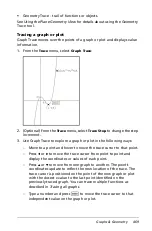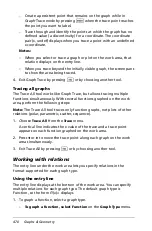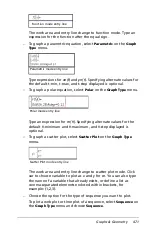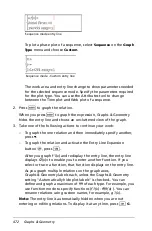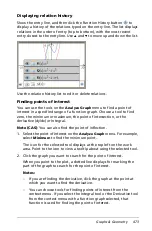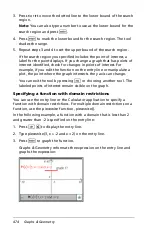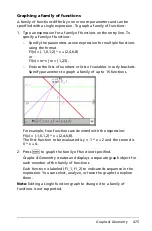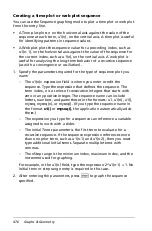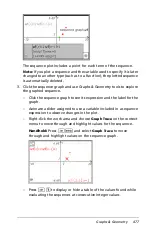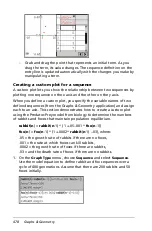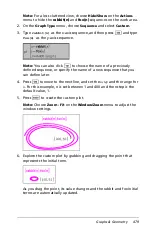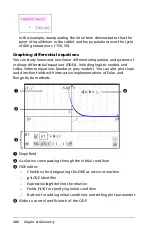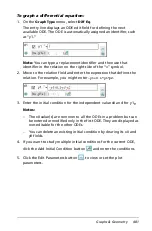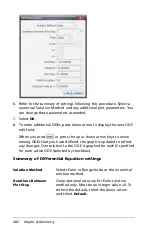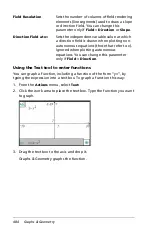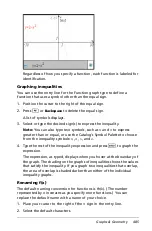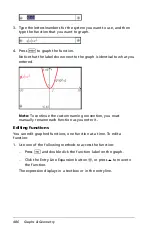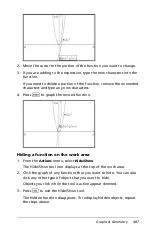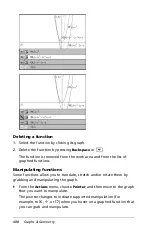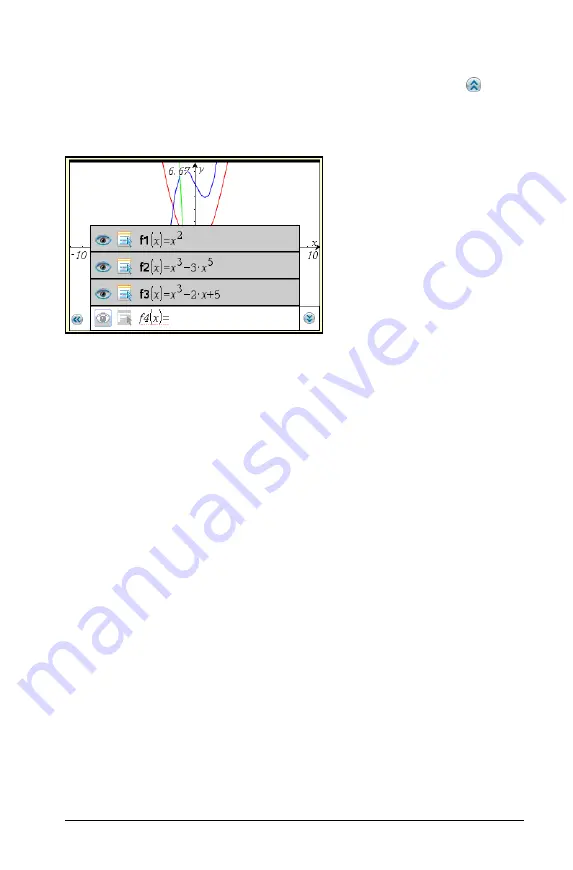
Graphs & Geometry
473
Displaying relation history
Show the entry line, and then click the Function History button
to
display a history of the relations typed on the entry line. The list displays
relations in the order of entry (top to bottom), with the most recent
entry closest to the entry line. Use
9
and
:
to move up and down the list.
Use the relation history list to edit or delete relations.
Finding points of interest
You can use the tools on the
Analyze Graph
menu to find a point of
interest in a specified range of a function graph. Choose a tool to find
zero, the minimum or maximum, the point of intersection, or the
derivative (dy/dx) or Integral.
Note
(CAS)
: You can also find the point of inflection.
1. Select the point of interest on the
Analyze Graph
menu. For example,
select
Minimum
to find the minimum point.
The icon for the selected tool displays at the top left on the work
area. Point to the icon to view a tooltip about using the selected tool.
2. Click the graph you want to search for the point of interest.
When you point to the plot, a dotted line displays for marking the
part of the graph to search for the point of interest.
Notes:
–
If you are finding the derivative, click the graph at the point at
which you want to find the derivative.
–
You can choose tools for finding points of interest from the
context menu. If you select the Integral tool or the Derivative tool
from the context menu with a function graph selected, that
function is used for finding the point of interest.
Summary of Contents for TI-Nspire
Page 38: ...26 Setting up the TI Nspire Navigator Teacher Software ...
Page 46: ...34 Getting started with the TI Nspire Navigator Teacher Software ...
Page 84: ...72 Using the Content Workspace ...
Page 180: ...168 Capturing Screens ...
Page 256: ...244 Embedding documents in web pages ...
Page 336: ...324 Polling students ...
Page 374: ...362 Using the Review Workspace ...
Page 436: ...424 Calculator ...
Page 450: ...438 Using Variables ...
Page 602: ...590 Using Lists Spreadsheet ...
Page 676: ...664 Using Notes You can also change the sample size and restart the sampling ...
Page 684: ...672 Libraries ...
Page 714: ...702 Programming ...
Page 828: ...816 Data Collection and Analysis ...
Page 846: ...834 Regulatory Information ...
Page 848: ...836 ...

